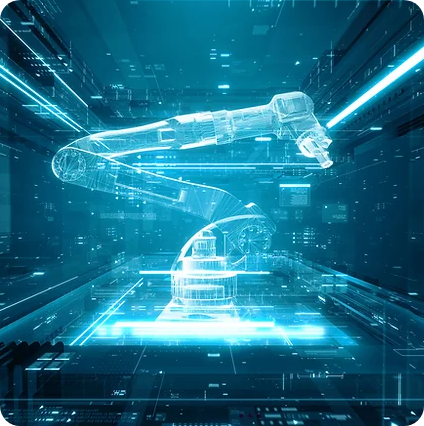
- October 23, 2024
- 1. Introduction
- 2. What Do You Get in Robotic Process Automation?
- 3. Is Robotic Process Automation Same as Artificial Intelligence?
- 4. How Does RPA Offer Better Automation?
- 5. Why Should I Use Robotic Process Automation?
- 6. Simplicity
- 7. Availability
- 8. No Human Error
- 9. Productivity
- 10. No Disruption
- 11. Where Should I Use Robotics Process Automation?
- 12. Customer Service
- 13. HR Automation
1. Introduction
Science fiction has shown us a lot about robots taking over the world. Does Robotic Process Automation or RPA mean that robots would rule over mankind one day? Let us find the answer in the following article on basics of RPA.
Technological advancements have always served as prominent milestones in changing the way businesses function. In the digital era, you can practically think of a thousand innovative technological developments which have transformed enterprise operations. However, Robotic Process Automation has emerged as a significant intervention for streamlining conventional business processes and systems. It supports the use of automation technologies for delivering the functionalities desired in tedious back-office tasks such as data extraction, file transfers, and other similar actions. The concept of robotic automation largely focuses on using software tools for replicating the actions in human interfaces with multiple software applications to perform different tasks. Let us learn more about the concept of using software tools to automate tedious tasks in business operations and processes.
2. What Do You Get in Robotic Process Automation?
When you hear the term ‘robot,’ you can expect that it would do all the tasks a human would have done. So, will RPA introduce robots into the workforce instead of human workers? If you think of it, the concept of robot-based automation is more or less similar to the notion. However, robotic process automation tools do not aim at replacing the underlying business applications. On the contrary, they help in automating the existing manual tasks for human workers. It basically involves the combination of APIs and user interface interactions for integrating and conducting different redundant tasks among enterprise and productivity solutions. RPA tools utilize scripts emulating different human processes for ensuring autonomous execution of different transactions and activities throughout different unassociated software systems.
The use of robotics automation focuses on rule-based software for addressing high-volume business process activities. As a result, businesses can free up human resources for prioritizing more complicated tasks which require human intervention. The applications of robot-based automation have helped business owners and decision-makers in accelerating digital transformation efforts alongside generating higher ROI. Familiarize with every aspect of robotics automation through reliable and industry-approved guidance from experts at Visvero right now.
3. Is Robotic Process Automation Same as Artificial Intelligence?
One of the foremost questions regarding the RPA meaning and definition points out its parallels with artificial intelligence. If robotics-based automation tools or software robotics need to stay competitive, they must look above the scope of task automation. Now, robotic process automation tools must offer the expanded functionalities of intelligent automation. With the new precedents for intelligent automation, RPA obviously has to focus on incorporating different components of artificial intelligence.
Machine learning, computer vision, and natural language processing are emerging as formidable improvements in robot-based process automation. The concept of intelligent process automation does not focus only on the simple rule-based systems in conventional robot-driven process automation. AI and machine learning play a crucial role in training algorithms for using data to enable faster and more efficient completion of tasks.
However, you must note that robotic automation and artificial intelligence are two different things. Artificial intelligence brings an exclusive combination of cognitive automation, hypothesis generation and analysis, machine learning, reasoning, and natural language processing.
One of the foremost differences between robot-driven process automation and AI is that the latter is data-driven. The process-driven nature of RPA automation presents a stark contrast from the nature of AI. You can notice how AI leverages machine learning for recognizing patterns in data alongside learning from the data. On the other hand, robotic process automation relies on processes defined by end-users.
If you look closely, AI focuses on simulation of human intelligence. On the other side of the spectrum, robot-based process automation tools aim at replicating the tasks of humans. Both of them focus on reducing the need for human intervention, albeit with different approaches to automation.
While RPA and AI are different from each other, you cannot undermine how they complement each other. For example, artificial intelligence can support complete automation of tasks alongside addressing use cases with higher complexity levels. Similarly, robotic automation can play a crucial role in faster implementation of AI insights rather than waiting for manual implementations. Start your journey of learning about RPA tools and processes with Visvero right now.
4. How Does RPA Offer Better Automation?
The detailed overview of RPA meaning and clarity regarding some of the misconceptions pertaining to AI called for an investigation into how it offers better automation. You can understand why robotics-driven process automation can offer better automation by diving deeper into how it works. One of the first things which can help you unravel the efficiency of RPA process in automation refers to core capabilities. The prime highlights in the features of robotics-based process automation can show you more about its working. Here are some of the critical aspects which define the working of software robotics tools.
- Low-code features for developing automation scripts.
- Seamless integration with different enterprise applications.
- Management and administration tasks such as configuration, security, and monitoring.
Automation technologies can obtain information from legacy systems alongside ensuring effective integration of the information with other applications by leveraging front-end integrations. As a result, the automation platform can function in the same way as a human worker and carry out routine tasks.
For example, a chatbot shows the best application of RPA for automating business tasks of customer service. Rather than having dedicated customer service personnel for answering routine questions from customers, businesses can use chatbot software. Chatbots help in automating communications with customers while also ensuring a human-like experience in the messages.
The facility of back-end connections to databases alongside enterprise web services can drive promising improvements in automation. At the same time, the real value of robotic process automation is evident in faster and easy front-end integrations.
5. Why Should I Use Robotic Process Automation?
After a detailed overview of the fundamentals and working of RPA technology, you must have some doubts about using it. Will it deliver the value you are looking for? Here are some numbers which showcase the productive side of robotics-based process automation.
According to a Pegasystems survey, around 63% of global executives perceived RPA as a significant element in digital transformation initiatives.
According to a Forrester study on the effects of robotics-based process automation on employee experience, around 57% of respondents associated RPA tools with a reduction of manual errors.
A Deloitte survey suggests that around 92% of respondents affirmed improved compliance with robotics-based process automation.
Almost 57% of business executives suggest that robotics-based process automation plays a vital role in improving employee engagement.
Around 60% of executives also reported that RPA process draws the focus of human intervention on more strategic tasks.
You can notice the favorable perception of robotics-based process automation in enterprise landscape. Now, you can consider the following benefits as reasons to start using robotics-driven automation.
6. Simplicity
The foremost value benefit associated with RPA technology is the simplicity for non-technical users. With a focus on limited coding, users can start robotics-driven automation with easy drag-and-drop features in new automation tools.
7. Availability
Another promising advantage in robotic process automation refers to availability. When you have bots working round the clock, the customer wait times get shorter, thereby ensuring better customer satisfaction. Find out how RPA systems offer better customer satisfaction with Visvero right now.
8. No Human Error
The bots follow specific rules and process flow defined in their code, which can reduce human error by a substantial margin. You can discover exceptional value with RPA in use cases that revolve prominently around compliance and accuracy.
9. Productivity
The next prominent entry among benefits of RPA automation would point toward productivity and cost savings. Robotics-driven automation can free up teams for other priority work, which contributes to improvements in productivity. At the same time, enterprises can offset the investments in RPA tools with improved ROI and productivity.
10. No Disruption
Above everything else, you should also take note of the fact that robotics-based process automation is minimally disruptive. Businesses can adopt automation technology without any disruption in the underlying systems. You can also use bots even in the absence of APIs or resources for creating deep integrations.
11. Where Should I Use Robotics Process Automation?
The reasons to use robotics automation provide a solid understanding of the popularity of the technology. However, you might want more specific information on how you can use robotics-based process automation technology. Interestingly, robotic automation has successfully entered many real-world use cases. Here are some of the notable use cases of robotics-based process automation which you can try in any business.
12. Customer Service
Automation of customer support systems with RPA technology can deliver promising benefits for businesses in terms of productivity. The rule-based nature of customer service processes makes them an ideal candidate for implementation of robotics-based process automation.
13. HR Automation
Another notable example of the use cases of RPA refers to HR automation. The UiPath HR automation case study shows a lot about the prospects of using robotics-based process automation. The company used robotic process automation to automate different aspects of the onboarding process for new employees.
You can explore a wide range of use cases for implementing RPA tools in transforming conventional enterprise operations. Explore the world of robotics process automation and the massive array of possibilities it brings for businesses today. However, you need the assurance of support and guidance from credible RPA solution providers such as Visvero right now.
- 1. Introduction
- 2. What Do You Get in Robotic Process Automation?
- 3. Is Robotic Process Automation Same as Artificial Intelligence?
- 4. How Does RPA Offer Better Automation?
- 5. Why Should I Use Robotic Process Automation?
- 6. Simplicity
- 7. Availability
- 8. No Human Error
- 9. Productivity
- 10. No Disruption
- 11. Where Should I Use Robotics Process Automation?
- 12. Customer Service
- 13. HR Automation



